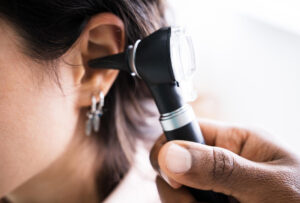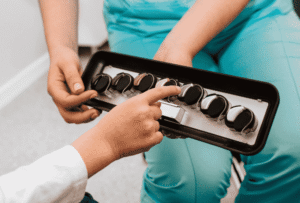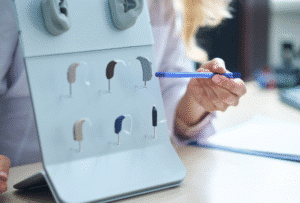If you’ve recently been diagnosed with hearing loss or haven’t purchased new hearing aids, you might be amazed at the range of styles and features the new hearing aids offer.
Most people with hearing loss can improve their auditory experience by using a hearing aid. With countless styles available, you’ll likely want to ensure that you choose the right one. Understanding what factors may influence your decision is helpful.
Hearing Aids Selection Tips
Here are some tips on selecting your hearing aids:
First and Foremost – Degree of Hearing Loss
Before choosing the specific style, we want to do a hearing test first. This is to confirm if a specific style is applicable for you. The hearing test will give us the range and the type of hearing aids that are suitable for you.
Features and Functions
Many of today’s hearing aids are feature-filled to ensure that they can provide you with the maximum functionality you need. The size is a huge tradeoff for having many features, so that’s the downside.
Considering which features you’ll use, you can choose a hearing aid that fits your needs and offers discretion. If you want to wear a hearing aid that you can barely see, the smaller-sized hearing aids are for you.
If you’ve been diagnosed with tinnitus (ringing in the ears), you may want to consider selecting a device with tinnitus masking features. They can help lessen your symptoms and improve your hearing function.
Recently, the tiniest hearing aids offer exceptional functionality, so you won’t miss out if you select a smaller device. There are a few features to consider, such as automated adjustments, direct audio input, wireless connectivity, remote controls, noise reduction, and directional microphones. Talk to your audiologist and ask for advice on the kind of feature you need to consider when choosing your hearing aid.
Style and Comfort
Hearing aids come in many styles: behind the ear (BTE), in the ear (ITE), and in the canal (ITC), and Receiver-in-Canal (RIC) are amongst the most popular. Some hearing aids are most suitable for particular types of hearing loss, so be sure to ask for advice from your audiologist. However, you’ll find that BTE, RIC, and ITC/ITE hearing devices are suitable for most people with hearing loss.
The behind-the-ear (BTE) hearing aid sits partially behind the ear, with an earpiece in the outer ear canal. Although this device style is more conspicuous than others, some designs limit their visibility.
ITE and ITC hearing devices present a more discreet option. The ITE hearing aids sit in the outer bowl, and ITC devices sit within the ear canal. To ensure your hearing aids are virtually impossible, wearing an ITC hearing device might be the right choice.
Receiver-In-Canal (RIC) hearing aid is similar to a BTE hearing aid, except the receiver or speaker is in the ear canal. Rather than a tube, a small wire links the hearing aid to the earpiece. Sometimes you’ll see a RIC hearing aid referred to as a Receiver-In-The-Ear (RITE) hearing aid.
Lifestyle
Your daily lifestyle can significantly affect the hearing aid that offers the best functionality. If you routinely spend a lot of time in busy environments with a lot of background noise, you’ll want a hearing aid that can control this noise effectively. While many devices offer noise filters, some are more advanced than others.
Alternatively, if you use a lot of technology, you may prefer a hearing aid that can sync with various devices. A hearing device with its phone app, wireless connectivity, and the ability to adjust the controls from your smartphone could be the ideal solution.
Battery Life
Smaller hearing devices utilize smaller batteries that will need to be changed more often than those in larger hearing aids. However, newer hearing aids have the potential to last longer. Some devices are equipped to last up to 36 hours of use before recharging. The downside is that they may look bulky.
Budget
Of course, you need to consider your budget when choosing a hearing aid. Some hearing aid styles may be more affordable than others. Choosing the most sophisticated kind has its price, just like other devices. However, each kind of hearing aid has styles that benefit your needs, so there is no need to worry.
Many new customers may have concerns with hearing aids, and you may not want them seen by others to avoid discrimination. Here at Active Hearing Center, we want those who have difficulty in hearing to be brilliant and to experience life to the max again. We have a selection of high-quality hearing aids that bring unique benefits to individuals with the difficulty of hearing.
You can visit Active Hearing Center, at any of our branches, for a hearing assessment and a deeper understanding of your hearing problem. If you already had your hearing checked and are now shopping for hearing aids, you can check the hearing devices we have for sale here.









